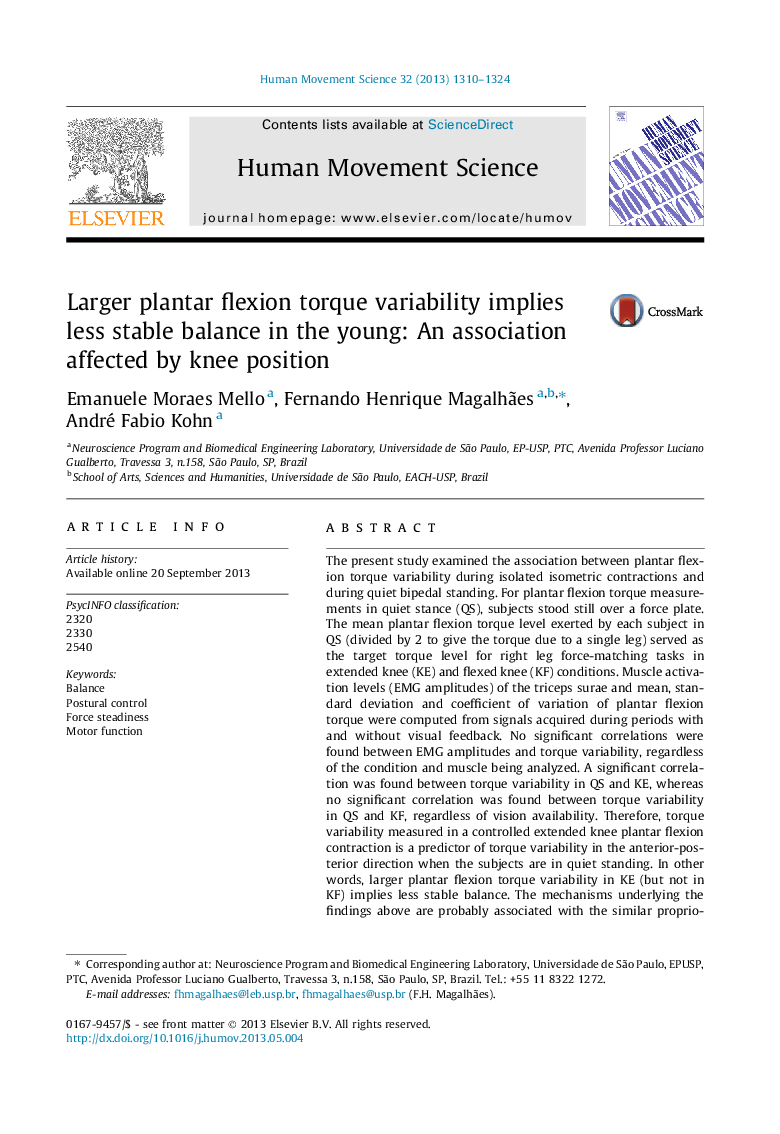| Article ID | Journal | Published Year | Pages | File Type |
|---|---|---|---|---|
| 10459146 | Human Movement Science | 2013 | 15 Pages |
Abstract
The present study examined the association between plantar flexion torque variability during isolated isometric contractions and during quiet bipedal standing. For plantar flexion torque measurements in quiet stance (QS), subjects stood still over a force plate. The mean plantar flexion torque level exerted by each subject in QS (divided by 2 to give the torque due to a single leg) served as the target torque level for right leg force-matching tasks in extended knee (KE) and flexed knee (KF) conditions. Muscle activation levels (EMG amplitudes) of the triceps surae and mean, standard deviation and coefficient of variation of plantar flexion torque were computed from signals acquired during periods with and without visual feedback. No significant correlations were found between EMG amplitudes and torque variability, regardless of the condition and muscle being analyzed. A significant correlation was found between torque variability in QS and KE, whereas no significant correlation was found between torque variability in QS and KF, regardless of vision availability. Therefore, torque variability measured in a controlled extended knee plantar flexion contraction is a predictor of torque variability in the anterior-posterior direction when the subjects are in quiet standing. In other words, larger plantar flexion torque variability in KE (but not in KF) implies less stable balance. The mechanisms underlying the findings above are probably associated with the similar proprioceptive feedback from the triceps surae in QS and KE and poorer proprioceptive feedback from the triceps surae in KF due to the slackening of the gastrocnemii. An additional putative mechanism includes the different torque contributions of each component of the triceps surae in the two knee angles. From a clinical and research standpoint, it would be advantageous to be able to estimate changes in balance ability by means of simple measurements of torque variability in a force matching task.
Related Topics
Life Sciences
Neuroscience
Cognitive Neuroscience
Authors
Emanuele Moraes Mello, Fernando Henrique Magalhães, André Fabio Kohn,
